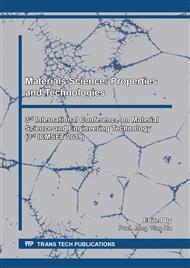p.69
p.73
p.79
p.85
p.91
p.97
p.103
p.109
p.115
Rapid Pitting Corrosion Failure Analysis of 13Cr Stainless Steel as Thermocouple Protecting Material in Dry Gas Pipeline
Abstract:
This paper presents corrosion failure analysis of 13Cr stainless steel (SS) in gas pipeline ingas pipeline, which was used as thermocouple protecting material (TPM). A portion of TMP faileddue to pitting corrosion under unknown circumstances. Scanning electron microscopy (SEM) andX-ray diffraction (XRD) are employed to characterize the scales and/or corrosion products near thefailed portion. Based on visual and microscopic analyses, reviewing the background information andthe thermodynamic calculation, the following rapid pitting corrosion failure sequences wereidentified: Once the pitting appeared, in addition to the gas leakage and expansion, the temperaturedrop should lead a small amount of water in dry gas to condense on the surface of TPM. On one hand,the high salinity produced water will corrode the thermocouple. On the other hand, the high salinityproduced water will pass into the annular space of TPM through the pitting because of the pressuredrop, and the water will stay on inner surface for more time than that of external surface, whichaccelerated pitting of TPM. More and more pitting appeared, and the surface roughness increased.The film-forming property of condensation water will also increase. So, the TPM will be scrappedsoon.
Info:
Periodical:
Pages:
91-96
Citation:
Online since:
August 2019
Authors:
Price:
Сopyright:
© 2019 Trans Tech Publications Ltd. All Rights Reserved
Share:
Citation:


